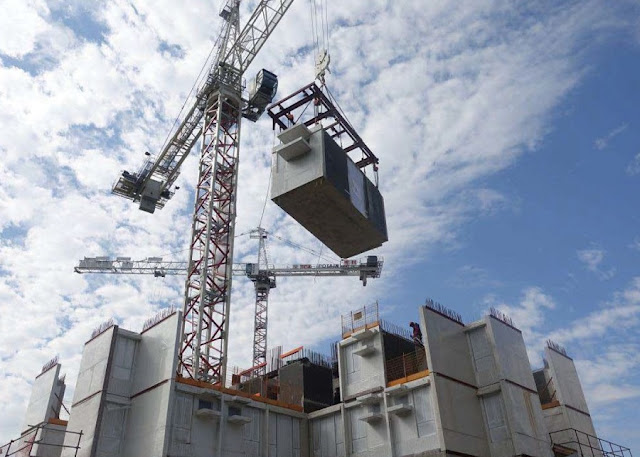Beyond the lobbying efforts of trade organisations looking to increase industrialization of construction, for their members' benefits, political agendas have also played an important role in disseminating manufacturing methodologies in construction. To increase productivity and reduce expenditures for civic buildings, policies have ranged from obliging a percentage of offsite construction to specifying performance-based offsite practices. Both strategies imply that governments become promoters of off-site construction.
Two notable historic examples, Operation Breakthrough in the USA (1969) and the GSK program in Japan (1971) discussed construction's lagging productivity and idealized efficient manufacturing methodologies to argue for applying production theories to architecture. While both programs did not immediately succeed in reforming artisanal construction, they were a fertile ground for developing novel ideas, systems, methods and strategies. About a decade ago, in Malaysia, a similar initiative for increasing productivity outlined the phrase Industrialized Building System from the examination of best practices in industrialized construction in both Europe and America going back to the 1960s. As of 2008, seventy percent IBS content of all contracted public work’s buildings became a requirement.
IBSs include but are not limited to the use of open and interoperable component based modular volumetric systems employed for a variety of building types. The government promotes an open systems approach for harmonizing on and offsite construction and has devised a plan for increased interoperability between systems. Almost a century after it was first studied in other nations; MC or modular coordination defines a dimensional matrix applied to building materials and components. 100mm or 1M is the smallest unit, like Bemis' 4-inch module used in construction since the early twentieth century, modular coordination facilitates planning and leads to simpler and repeatable assemblies.
While the government has defined the basic framework of IBS and prescribed the 70% threshold for all public buildings, some data shows that conventional builders still seem to prefer onsite building methods as the greater startup costs in IBS precludes fair competition. IBS requires more upfront planning, greater stakeholder collaboration and increased overhead costs linked to factory production. Even as offsite's advantages are clear and seem too great to pass up, especially in an era of rapid urbanization, increasing uptake still remains challenged by the artisan's perceived flexibility and adaptability.
 |
| Box units or modular construction is part of the 70% baseline for IBSs in Malaysia |
No comments:
Post a Comment